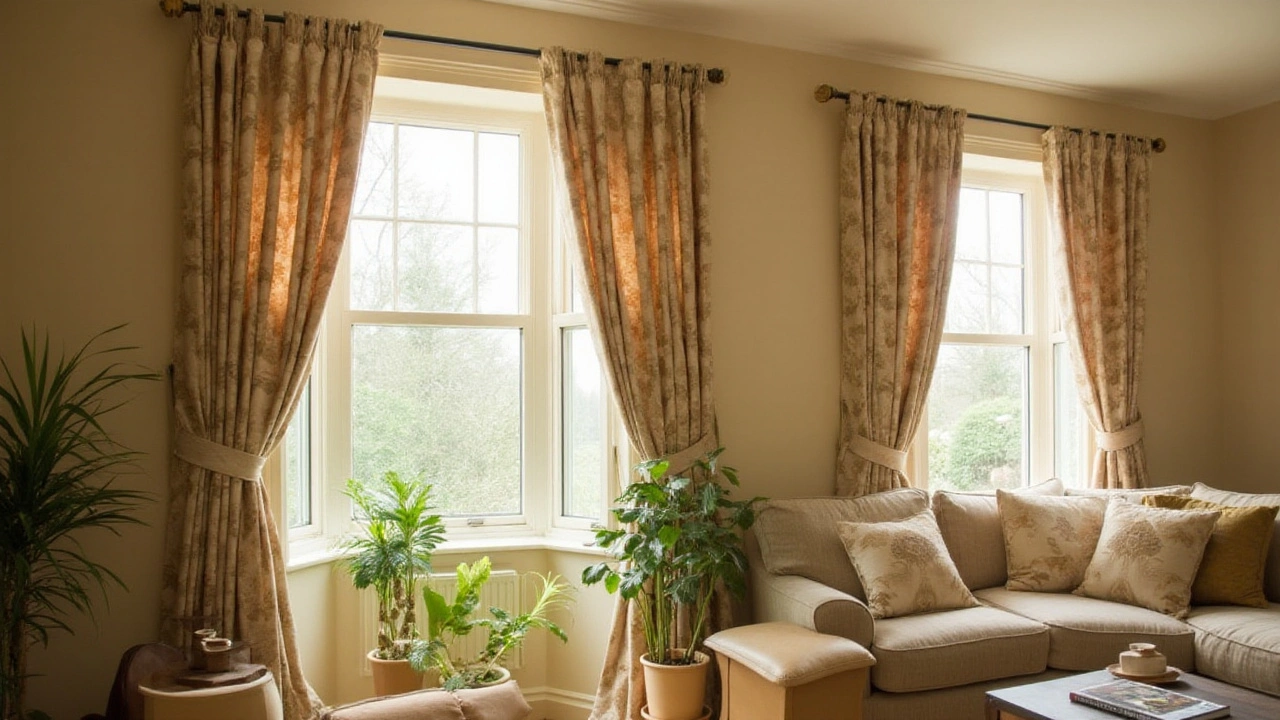Curtain Direction: Simple Tips to Hang, Open, and Style Your Windows
Ever walked into a room and felt something was off because the curtains didn’t look right? It usually comes down to curtain direction – where you hang them, which way they open, and how they sit on the wall. Getting this right can instantly lift a space, make a room feel bigger, or tie your sofa and décor together.
Where to Hang Your Curtains
First thing’s first: the rod height. For most windows, mount the rod about 4‑6 inches above the frame. If you want a higher ceiling feel, push the rod all the way up to the ceiling line. This pulls the eye upward and adds a sense of height. Also, place the rod a few inches wider than the window itself; this lets the curtains frame the glass instead of blocking it.
Next, think about clearance. If you have a deep window, pull the curtain back about half the width of the window when opened. This prevents the fabric from piling up and keeps the view clear. When you’re using a sheer layer, let it sit closer to the glass, while heavier drapes can sit a bit farther out for drama.
Which Way Should Curtains Open?
Most people instinctively pull curtains to the side they’re used to. The rule of thumb is to open them away from the main focal point of the room. If your sofa faces the window, let the curtains open to the side opposite the sofa. This way the fabric doesn’t block the view when you’re sitting down.
If you’re dealing with a narrow space, consider a “cross‑window” approach: use two rods and let each half open toward the center. This creates a balanced look and gives you a bigger opening for natural light. For sliding doors, a simple pull‑to‑side method works best – just make sure the hardware can handle the weight.
Another quick fix for making a room look larger is to choose light‑colored curtains and hang them on the inside of the window frame. Light fabrics reflect more daylight, and the slim line of the rod makes the window appear bigger.
Matching curtains with a sofa? Skip the exact match and aim for complementary tones. If your sofa is a deep navy, a soft grey or muted teal curtain adds interest without clashing. Play with texture – a linen curtain can soften a leather sofa, while a velvet drape adds luxe to a cotton set.
Finally, maintain your curtains. A quick tumble dry on low or a gentle hand wash keeps colors fresh. If you notice the fabric sagging, add extra rings or a sturdier rod. Small adjustments keep the direction looking intentional, not forgotten.
With these easy steps – mount the rod higher, let the curtains open away from focal points, and pair colors wisely – you’ll turn a simple window into a design feature. No need for a designer; just a few minutes and a clear plan, and your curtains will finally work for you, not against you.
-

Which Curtain Side Faces Out: Key Factors and Tips
Deciding which side of the curtain faces outward isn't just about aesthetics; it can impact your home's light, privacy, and energy efficiency. This article delves into how the choice of curtain direction can affect your space, providing practical tips and interesting facts. Learn how materials, patterns, and environmental factors play a role in this decision. Explore the benefits of proper curtain positioning and elevate your home decor effortlessly. Suitable guidance ensures that your curtains not only look great but also serve their purpose effectively.
